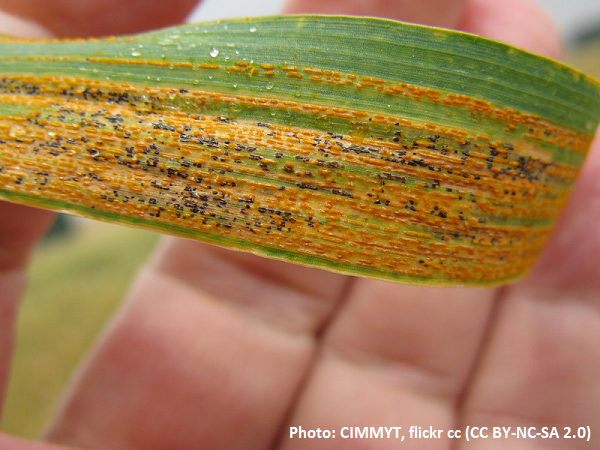Winter Barley: Disease risk – Late May 2020
25 May 2020SRUC‘s Crop Clinic ‘Adopt a Crop’ monitoring data for late May is shown in the table below. The data is generated in commercial crops so is indicative of the disease pressure and growth stages on farms at the moment. It should give you a guide to the generic disease pressure in your area.
| Winter wheat | Average | Maximum | Minimum |
|---|---|---|---|
| Crop Growth Stage | 36 | 45 | 32 |
| Mildew | 0.5 | 1 | 0 |
| Septoria tritici | 0.9 | 3 | 0 |
Disease levels are still low and yellow rust has usually been well managed by T1 sprays. Its presence though, and the recent rain and swing back to warmer temperatures send a strong message about the need to keep spray intervals tight and not allow yellow rust an easy window to sneak back in.
The removal of chlorothalonil changes flag leaf spray plans significantly. All other options are more expensive and as a multisite, it helped to steward against fungicide resistance. Folpet will be a partial replacement in this regard, albeit at a lower efficacy. Without the efficacy of chlorothalonil in programmes though there is also a need to move to newer or more effective SDHI + Azole chemistry and to increase doses. The rate of folpet as Phoenix should be kept high to try and get the best efficacy possible – (1.0 to 1.5 l/ha) and kept within the 3 l/ha maximum application total to a crop.
Flag leaf is the most responsive timing and SDHI and azole chemistry is core at this spray timing. There have been a few queries about whether this can be cut back in thin crops given the poorer yield potential. In reality, though green leaf area is just as important in these crops – perhaps more so and the scope for reductions are not great. But possibly this is a scenario where ‘middle-aged’ azole and SDHI mixes might be applicable. Wheat will keep yielding right up to the end so the rewards of retaining the top three leaves and particularly the flag leaf are worthwhile.
Timing is critical as you are aiming to as fully coat the flag leaf as possible. Ear sprays will top up the foliar disease control as well as reduce the risk of ear blight. At this timing, we are still very reliant on azoles or azole mixes, and the addition of a multisite will again help to reduce the risk of resistance which would otherwise be raised if we used only azole actives at this timing.
Sign up to the FAS newsletter
Receive updates on news, events and publications from Scotland’s Farm Advisory Service

